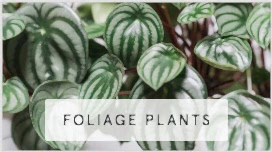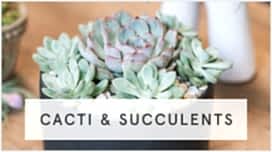Living a Plant-Based Lifestyle

Living a Plant-Based Lifestyle
What was once a fleeting trend has since grown into a way of life. Plant-based diets are based on consuming only fruits, vegetables, whole grains, legumes, and other foods that are rich in nutrients. Numerous studies have attributed this style of eating to health benefits that may cut the risk of developing heart disease, some types of cancer, diabetes, hypertension, and even depression. While it’s a commitment, it does not necessarily require exclusion — people can still eat other types of foods if they wish.
At the same time, there’s also been a greater focus on living greener, plant-based lives as a whole. Beyond simply consuming them, plants have the potential to add value, beauty, and style to so many other areas of life. This is why cultivating indoor gardens is so effective and why people spend hours giving their green thumbs a workout. No matter what role plants play in your life, you can be sure that they’ll make an enormous difference in one way or another. Here’s how to make them a more integral part of your routine.
Shift Your Dietary Habits
While you may be accustomed to eating a certain type of diet, shifting to a more plant-based state of mind may affect everything from your energy levels to your long-term health. Several different types of eating plans exist, providing flexibility and allowing for significant diversity that may appeal to those who aren’t sure if it’s the right choice for them. Among them are Mediterranean and vegetarian diets.
The former may be a powerful option for those who consume seafood already. Incorporating more plants into your routine helps you cultivate a healthier lifestyle all around. The diet is primarily composed of fruits, vegetables, nuts, legumes, whole grains, fish, breads, and herbs. Items like poultry, yogurt, cheese, and eggs may be consumed in moderation, with occasional allowances for sweets and other types of meats.
Vegetarian diets generally include all types of fruits and vegetables, but there’s some flexibility here, too. Standard varieties include consumption of dairy and eggs, but exclude meat and seafood. By contrast, semi-vegetarian diets include dairy, eggs, and occasional meat and seafood. A pescatarian diet excludes meat entirely, but does include dairy, eggs, and seafood. Finally, vegan diets eliminate all animal-based foods entirely, including dairy and eggs.
Making the transition can be difficult for those who consume meat and seafood regularly. The key is to approach each meal with a new mindset. Commit to filling the plate primarily with vegetables, leaving enough room for a variety of healthy fat sources. Items like nut butter and avocados are both excellent sources. Whole grains provide bulk and keep you full for longer periods. If you wish to consume meat, use it not as the focal point of the meal, but as an addition. Focus on building meals around greens instead.
Build an Indoor Jungle
A little bit of creativity may even inspire you to bring some of that delectable plant life inside your home. Whether you lack sufficient space outside or you just want to take advantage of the many noted benefits of indoor gardens, it may be worth cultivating a space that brims with character and adds a splash or two of bountiful beauty to your interior space. Where to begin? Think of your own commitment level and what you’re comfortable with as you consider the right plants for your indoor jungle.
If you’re a regular green thumb, for example, and know your way around watering techniques, light levels, and fertilizer choices, then there should be no question about it — you can easily find a variety of plants that will thrive in your home. But if you’re more of an amateur, it’s best to stick with easy “beginner” plants that don’t require too much time, attention, or maintenance, and that generally handle different types of conditions with ease. Spider plants, golden pothos vines, and succulents are all outstanding options that not only help you feel like you’re a natural-born gardener, but also add beauty to the home without needing much help from you.
It’s key to focus on a few specific factors to ensure that your indoor jungle thrives. Adequate lighting, proper moisture levels, and occasional fertilization are all key to a plant’s success. Overwatering and giving them too much light can be detrimental — and they’ll show the visible effects sooner rather than later, with issues like root rot, mold, and wilting leaves all occurring over time. Do some homework before you introduce any plants into your world so that you can more effectively determine what you can raise and help thrive with ease.
Add Some Air Purifiers
You don’t necessarily need to create an entire garden to take advantage of the natural air-purifying benefits of houseplants. Studies have found that many different varieties might be capable of pulling pollutants from indoor air and reducing the amount of potentially harmful chemicals that might otherwise cause long-term harm to your home and its occupants, such as xylene, toluene, formaldehyde, benzene, and trichloroethylene.
Among the most effective air-purifying options are snake plants, spider plants, money plants, Chinese evergreens, and dracaenas. The beauty of many, like snake plants and dracaenas, is that they’re incredibly easy to maintain. If your green thumb is barely green and you want to introduce something bright and colorful to your home that also happens to pull some of the toxicities from the air, these are outstanding options.
Be mindful if you have pets, however. Some types of houseplants are toxic to animals, so do your research in order to protect your fur baby from any harm. Common culprits include jade plants, kalanchoe, aloe plants, dracaena, English ivy, snake plants, and pothos. Keep these away from children, too, as little ones are often eager to touch and explore anything new that they see.
Get Associated With Gardening
If you have a yard and a little bit of motivation, you might consider adding gardening to your list of activities. Spending time outside has been proven to boost the spirits, largely thanks to the hefty dose of vitamin D the sun imparts. But just experiencing a different environment is also good for the mind, body, and soul, and it can help you appreciate the fine art of learning something new at the same time.
It’s often about discovering a bit of Zen while you’re out there. It has the potential to be an especially quiet, peaceful, and secluded time — a rare moment of ease where you aren’t burdened by stresses of the outside world. What needs your attention the most in that moment is your garden, and it can be a sacred and fulfilling experience tending to your plants while adding some fresh air and activity to your day.
What if you’re a total beginner? It doesn’t matter. You’ve got options no matter your experience level. Even if you’ve barely glanced a plant’s way, you may be surprised to find that the first steps to cultivating your own personal garden are surprisingly simple. It’s best to start with containers, which make it especially simple to maintain your plants.
Keep in mind that you don’t have to grow everything from seeds, either! Sure, there’s a nice feeling of satisfaction that comes with admiring your garden beds as they develop, but you can just as easily take pride in knowing that you’ve nurtured grown plants, kept them beautiful, and added to your home’s curb appeal at the same time.
Do your research, too. Consider what your yard has to offer. Is it relatively shaded by trees? If so, then plants that require direct sunlight may not perform so well out there. The good news is that many plants thrive in shadier conditions and indirect lighting. You’ll just need to do some research before you commit to anything.
As for commitment levels, you’ll definitely need to put some energy into this task if you want your plants — whether from seed or grown — to continue to look their best. At a bare minimum, they’ll need water. Overwatering is a thing to avoid, however, as it can lead to irreversible issues like root rot. You’ll also need to commit to a regular feeding schedule, as your plants require nutrients to truly thrive.
If you can’t quite get the outdoor gardening thing down, you can always trace back to cultivating an indoor jungle. It’s one of the most satisfying hobbies out there — and you’ll reap the rewards every single day in the form of a serene, beautifully cultivated space that you brought to life on your own. It’s just another way that living a greener lifestyle benefits you.
Cultivating a greener lifestyle and incorporating plants into your universe goes beyond eating them. By adding some fresh greenery to your home or learning how to care for an outdoor garden, you can easily transform the way that you see the world and gain a newfound appreciation for its natural beauty.












